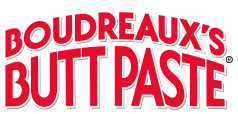

When your baby starts eating and enjoying solid foods, it opens the door to lots of fun moments for everyone, and can make mealtime an adventure. Both of my boys loved sitting in their high chairs and eating at the table with us. Sure, it was messy, but it was also fun.
As babies, my boys were picky eaters. It was a constant battle to get them to try new things. This slowly changed when they began eating solid foods. They were more willing to try new foods and explore flavors and textures. Anything they could grasp with their pincer grip like Cheerios was highly entertaining to them.
Every new mom experiences the hilarious “firsts” like when they tried a pickle for the first time or licked a lime. In fact, they both loved tasting lemons despite the surprisingly sour zing.
If your baby is ready to try solid foods, here are some helpful tips to get you both started on your new foodie path:
Is your baby ready for solid food?
How do you know when it’s time? Most babies will begin to try solid foods between 4-6 months of age, although pediatricians recommend waiting until 6 months old. Remember, solid food means anything thicker than formula and breast milk like rice cereal—it doesn’t mean steak and potatoes.
Your baby needs to be able to sit upright without assistance before embarking on the solid food journey.
First foods
Just because your baby is eating solid food doesn’t mean she should be crunching apples and Cheetos! There are recommended first foods that are easier for her to digest and safe for her to swallow.
Plus, certain foods have a less likely chance to cause allergic reactions. The best, most nutritious first foods include: avocado, sweet potato, banana and pear. You can read more about best first meals for baby here.
Think single grains
In the wee stages of her foodie foray, your baby can eat single-grain cereal since it is fortified with iron, which your baby needs. Rice cereal is also safe as her “first food” because she doesn’t need teeth to enjoy it. If she can master runny cereal, then it’s time to try thicker cereal.
Perfectly puréed
After mushy cereal, most babies move on to puréed veggies, fruits, and meats around 4-8 months. This is when you either stock up on baby food or find recipes to make your own. The great debate over whether your baby should try fruits or veggies first is really up to you.
You’ll find plenty of Stage 1 foods for her to enjoy first. As she gets older, her food options will get chunkier, more diverse and more flavorful.
Mashed & chopped
The key to trying first foods as your baby gets older (9-12 months) is to make sure it’s all chopped, mashed or ground, so she can chew and swallow it easily. From pureed veggies to ground meats and finely chopped finger foods, it can be surprising how many foods end up in your blender or food processor.
For instance, if I made a casserole for my family, I could blend it up into a “mash” and feed it to my son as his meal.
Diaper duty
Don’t forget that adding new foods to your baby’s diet changes her bathroom habits AKA diapers. Use Boudreaux’s Butt Paste® during diaper changes to keep moisture and icky stuff off of her sensitive skin.
What are your tips & tricks for introducing your baby to solid foods? Let us know in the comments section on the Boudreaux’s Butt Paste® Facebook page.


